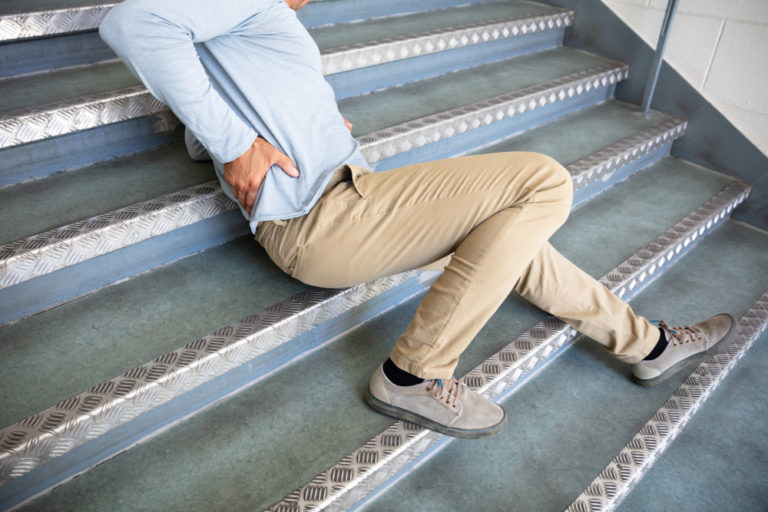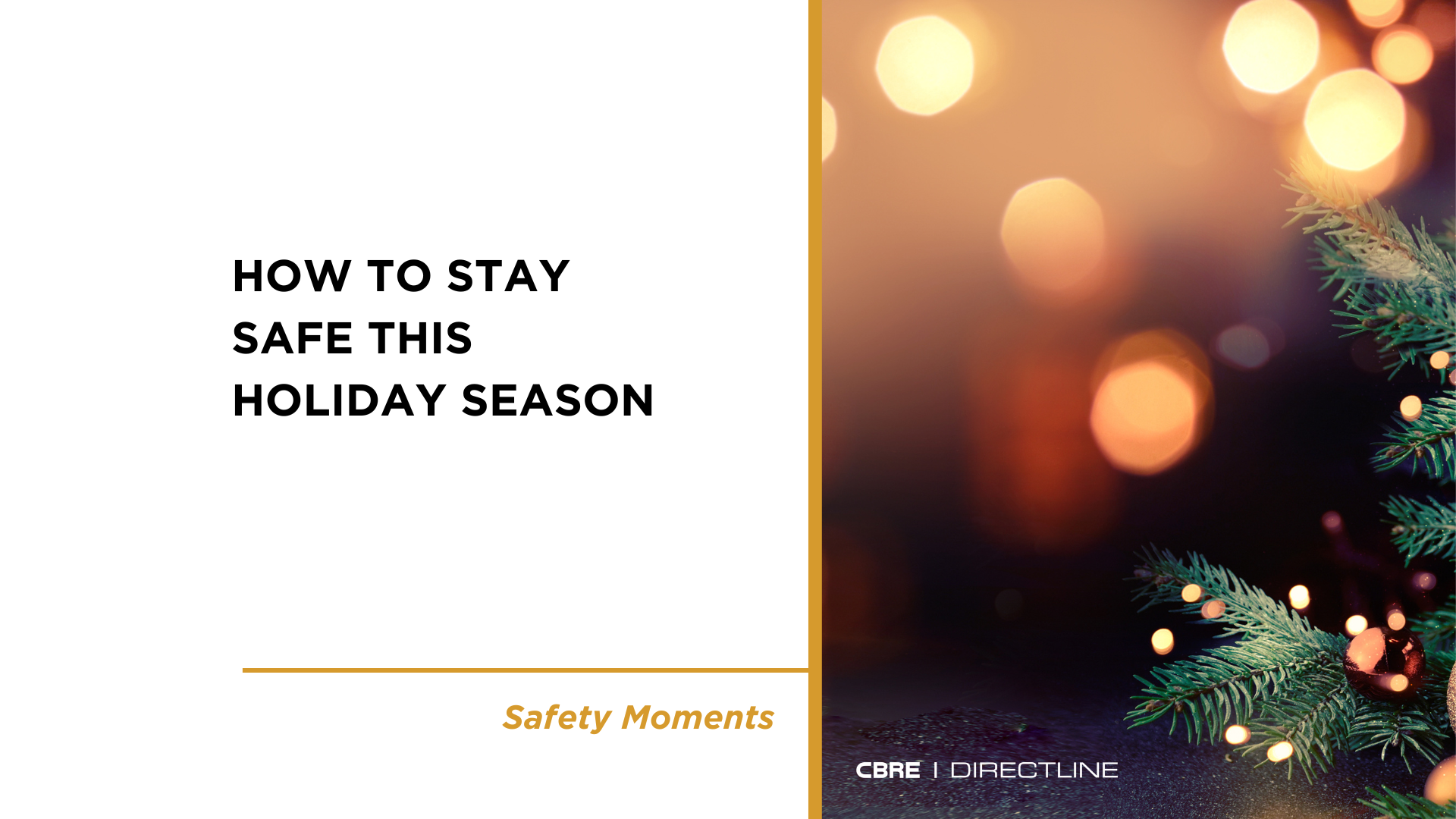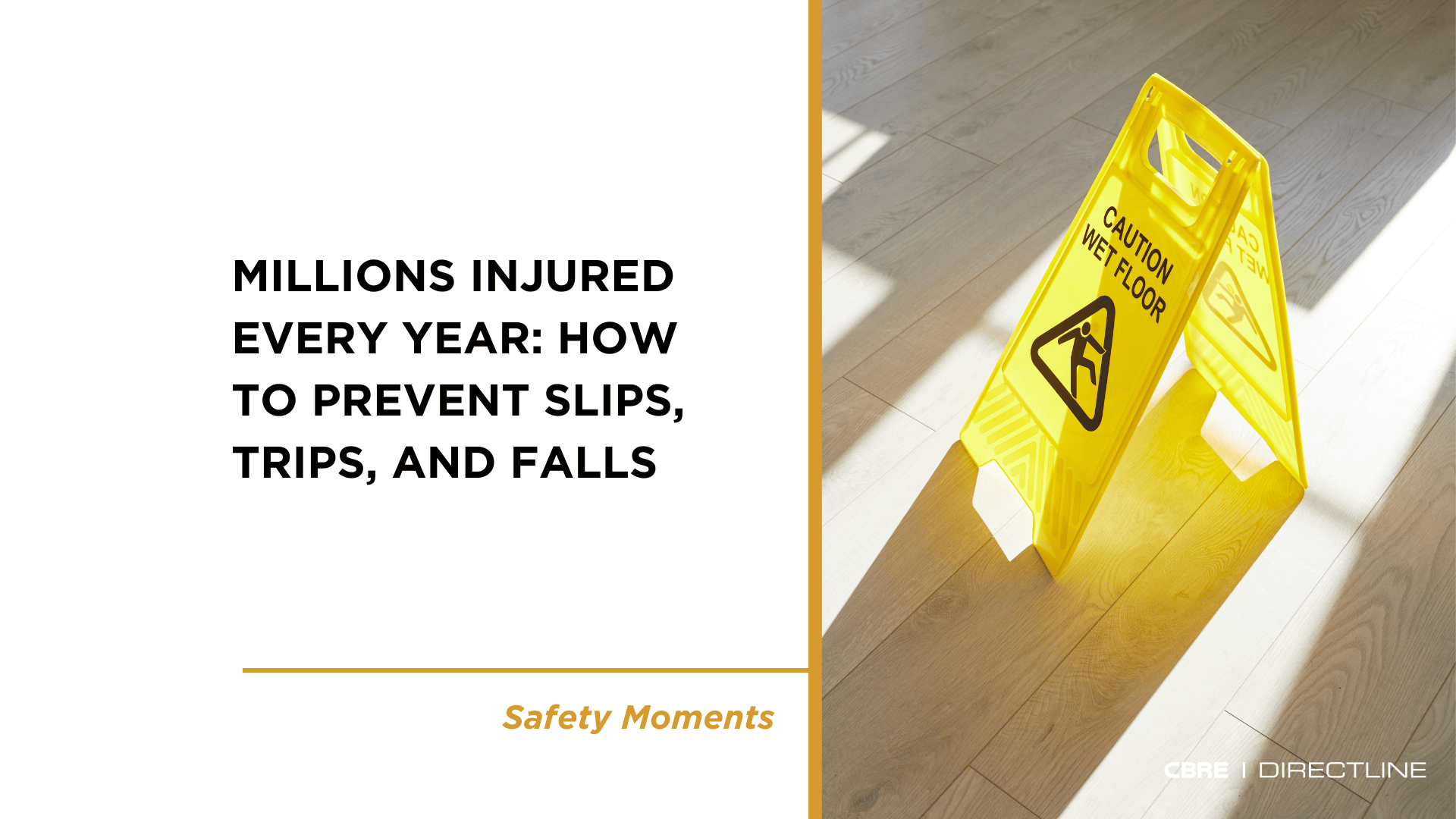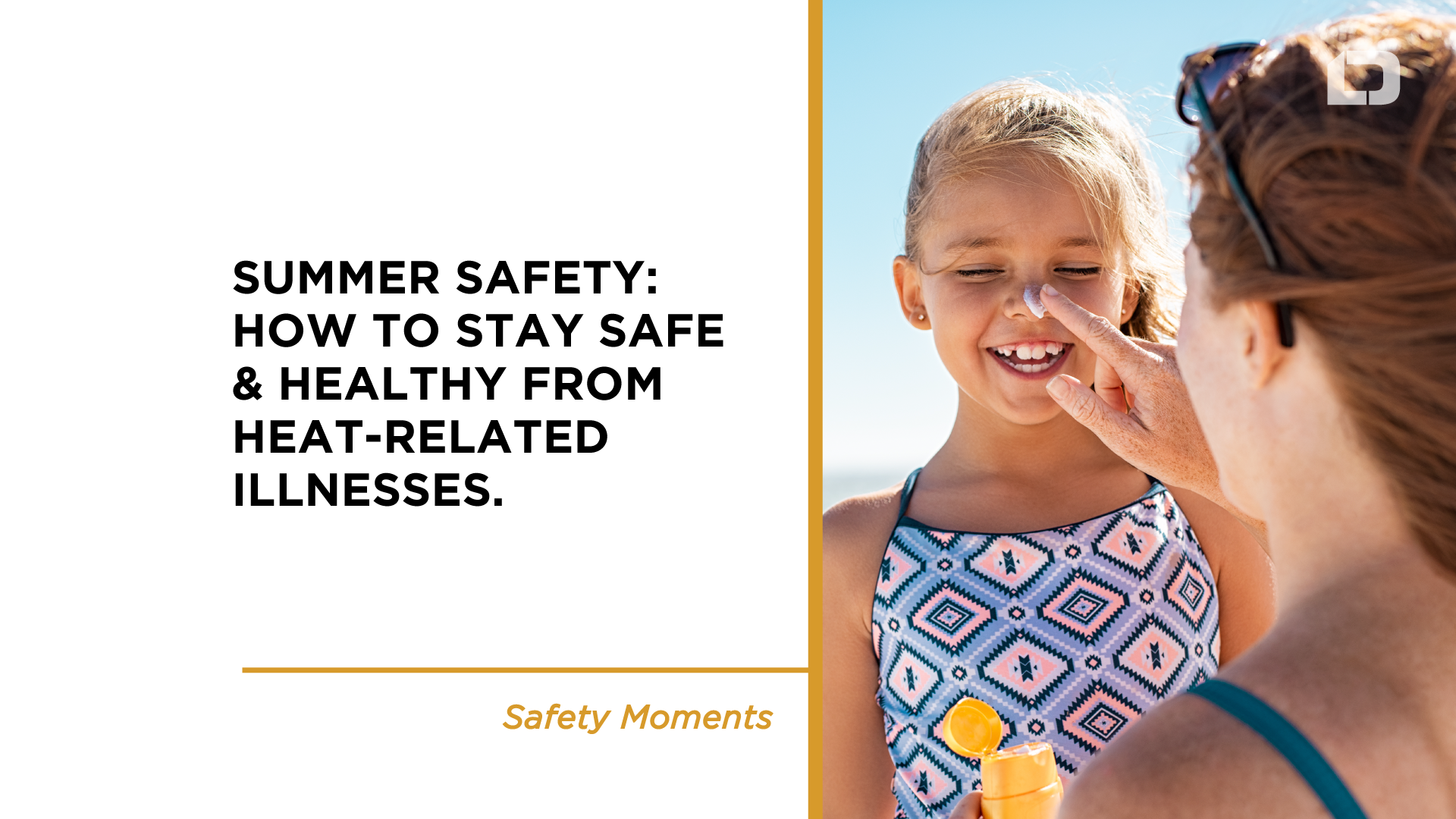Stay Safe at Work and at Home
Preventable injuries, commonly known as “accidents,” are the fourth leading cause of U.S. deaths.
Join us in observing National Safety Month as we work together to highlight leading causes of preventable injury and death so people can live their lives to the fullest.
Reducing slips, trips, and falls
Fall hazards remain a common problem across multiple industries and workplaces.
Falls – Lower Level
Following highway crashes and intentional injuries by persons, falls to a lower level are the third leading fatal workplace event and the fifth leading event resulting in cases with days away from work. In 2021, 680 workers died and in 2020, 49,250 were injured (latest data available). This category applies to injuries when all the following factors are true:
- The injury was produced by impact between the injured person and the source of the injury.
- The injured person’s movement produced the injury.
- The motion of the person and the force of the impact was generated by gravity.
- The point of contact with the source of the injury was lower than the surface supporting the person at the inception of the fall.

Falls – Same Level
Following exposure to harmful substances or environments and overexertion, injuries fall on the same level as the third leading preventable workplace injury or illness event resulting in cases with days away from work. In 2020, 136 workers died, and 127,680 were injured. This category applies to injuries when all the following factors are accurate:
- The injury was produced by impact between the injured person and the source of injury without elevation.
- The injured person’s movement produced the injury.
- The motion of the person was generated by gravity following the individual’s loss of equilibrium.
The point of contact with the source of the injury was at the same level or above the surface supporting the person at the inception of the fall.
7 tips for safe use of ladders
Ladders are common at workplaces and in homes across the country. So common that safety can get overlooked.
“I think it’s important for us to realize that ladders are safety equipment, not just throwaway lives when they are injured or killed.”
Here are seven tips for reducing the risk of ladder-related incidents and injuries:

1. Pick the right ladder.
One of the biggest issues is users not selecting the right ladder for the task – whether out of convenience or availability.
Choose the right ladder for the job and make sure you receive training on its proper use. Failure to do so often leads to ladder users overreaching, climbing too high, or getting into an awkward position.
“It’s just a matter of looking and seeing what the job is, and then asking, ‘What size ladder do I need to do the job?’” said Richard Fairfax, former deputy assistant director at OSHA and currently a principal consultant for NSC Networks – part of the Workplace Area at the National Safety Council. “And most people, they go grab a ladder from a stack of ladders and they set it up. And if it’s the wrong size, they’re going to try to make do rather than fix it.”
2. Inspect before us.
Ladders shall be inspected by a competent person for visible defects periodically and after any occurrence that could affect their safe use.
During an inspection, look for loose steps, rungs, nails, screws, and bolts; broken or damaged parts; and compromised warning labels. Also, make sure climbing and gripping surfaces are free of debris and slippery substances.
“Workers will typically just use ladders” without inspecting them, said Damon Bonneau, safety, and occupational health specialist in OSHA’s Office of Construction Services. “But a competent person needs to inspect the ladder and make sure that the ladder is being used safely.”
Fairfax added that workers who spot a defective ladder should clearly tag the equipment and make sure it’s taken out of service.
3. Go (3 feet) above and beyond!
An agency analysis of OSHA Information System data from 2017 to 2021 found that the most cited subsection of the standard on ladders was (b)(1), which requires that side rails of portable ladders extend 3 feet above the surface being accessed.
Not doing so can create preventable hazards during access and egress. For instance, standing on the three top rungs of a straight, single, or extension ladder – a practice OSHA prohibits.
“A lot of that is due to the height not necessarily being taken into account appropriately beforehand and the ladder just simply isn’t long enough” to access the work surface with the 3-foot clearance required, Gilmore said. “But that’s what they have, so that’s what is used.”

4. Maintain three points of contact.
Casually climbing ladders can lead to injuries – and even death.
Always maintain three points of contact when climbing, OSHA says. This means using two hands and one foot or two feet and one hand. And your body should be positioned near the middle of the step. Face the ladder when climbing.
“A lot of people are too fast going down a ladder,” Fairfax said. “They skip steps, or they want to go down facing away from the ladder so they can kind of slide down the ladder if they’re wearing gloves. So, it’s just important to take the same approach going down a ladder as it is climbing up the ladder.”
Whatever the case, avoid carrying tools or other items when climbing up or down a ladder, as well.
“Ladders aren’t made for carrying materials up and down on,” Fairfax said. “You have other equipment for that.”
Regarding the debate over whether workers should use rungs or rails to maintain three points of contact: OSHA regulations don’t specify. “As long as they can safely access and egress that ladder, that’s what we want them to do,” said Damon Bonneau, safety, and occupational health specialist in OSHA’s Office of Construction Services.
5. Monitor the weather.
Foremen on job sites can set workers up for success by understanding if and when harsh winter weather is expected. “I think about work as if we’re a soccer team or a football team or a hockey team,” Mulligan said. “Can the team be successful” in cold conditions?
Start the day by checking a mobile weather app and continue to monitor it. Many weather apps are available at no cost.

6. Make a space.
Have you seen a telephone technician or cable crew place cones to designate a working space?
Fairfax recommends doing the same for ladder users.
“When you’ve got a ladder up against the side of a building or are somewhere using it, it’s really important to stick up a couple of cones 3 or 4 feet away from it so people see the cones and stop. I can’t tell you the number of accidents I’ve looked at where someone’s got a ladder and it’s right near the corner of a building and someone on a forklift, or someone walking really fast or someone pushing a pallet jack or something like that, turns around the corner and they smack right into the side of the bottom of the ladder.”
7. Secure during transport and when storing.
Oregon OSHA advises laying ladders parallel to truck beds during transport, padding points of contact with soft materials, and securing the equipment to prevent movement. When transporting a ladder on a vehicle rack, make sure the rack has abrasion-resistant contact points or place and secure soft items between the ladder and rack.
Van Bree said vibration and road shock during ladder transport can cause damage quickly if the equipment isn’t secured.
“If you don’t catch that, it can lead to a problem and structurally compromise the ladder,” he said.
When storing ladders, Oregon OSHA recommends keeping them in well-ventilated areas away from threats of impact/physical damage and free from heat sources. Make sure wood and fiberglass ladders aren’t subjected to excessive humidity, moisture, and sunlight.
“Where possible, storing the product inside obviously is going to be better for it,” Moss said. “Winter or summer.”
At Direct Line Global, we put constant emphasis on our Safety Culture. Our team members’ health and safety matter at all times. Learn more about our Safety posts on our website. Stay safe out there!
For more information visit these links:
Center for Disease Control: https://www.cdc.gov/niosh/topics/retail/slips.html
Preventing Slips, Trips, and Falls: https://safetyculture.com/topics/slips-trips-and-falls
National Safety Council: https://www.nsc.org/work-safety/safety-topics/slips-trips-and-fall
YOUR SAFETY & HEALTH MATTER, BOTH ON AND OFF THE JOB. YOU ARE AN IMPORTANT PART OF DIRECT LINE.
Follow us here
Related Articles
What Should You Keep in the Car?
Every vehicle should have an emergency supply kit in the trunk. Kits should be checked every six months, and expired items should be replaced regularly. Vehicle emergency supply kits should include:








